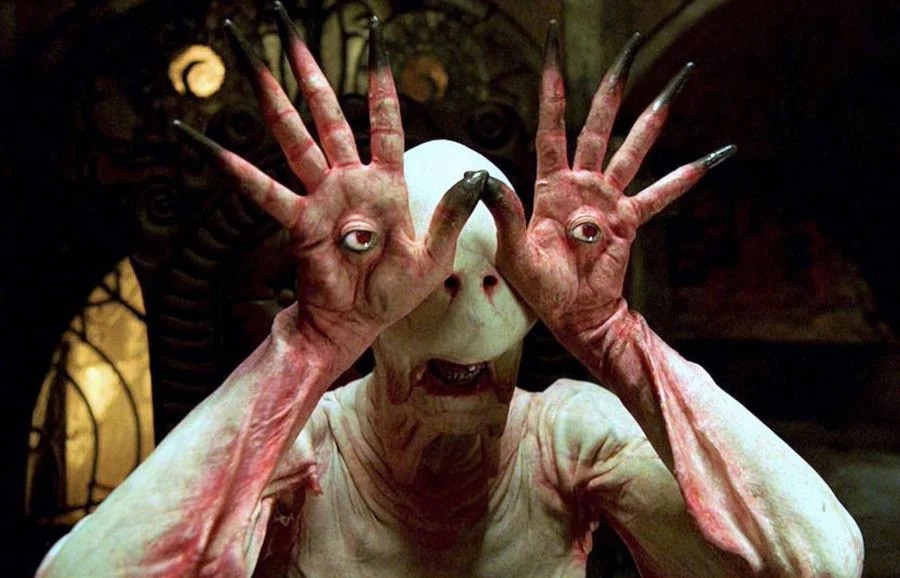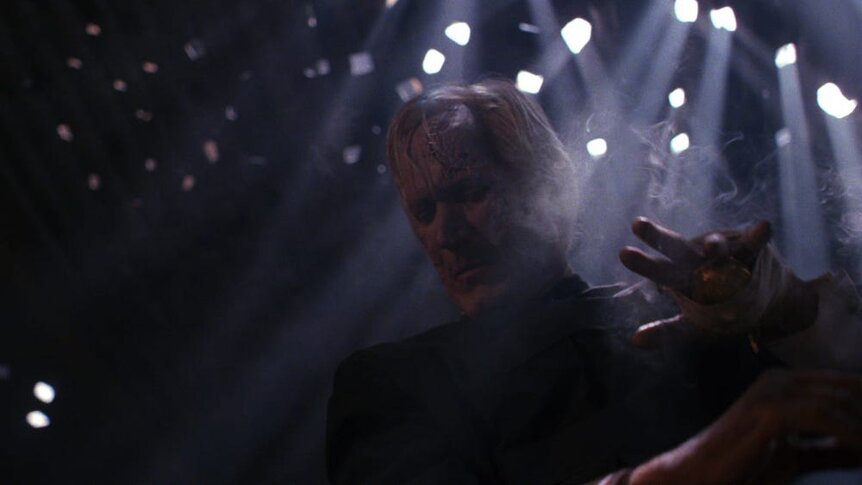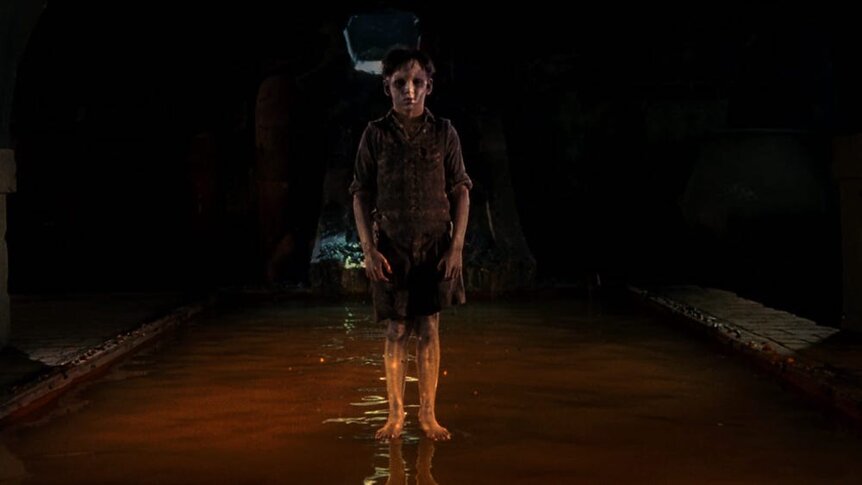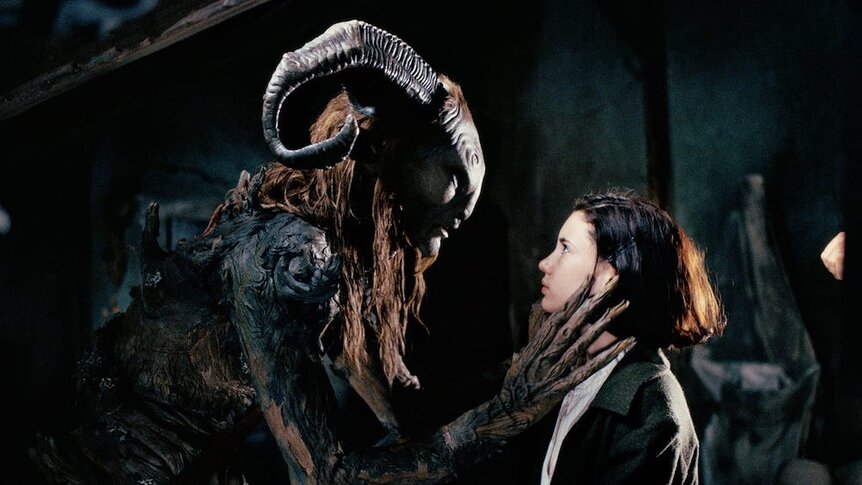Create a free profile to get unlimited access to exclusive videos, sweepstakes, and more!
Every Guillermo del Toro movie, ranked from 'Mimic' to 'Nightmare Alley'
With the Oscar-winning filmmaker's latest, Pinocchio, hitting Netflix, we look back at his full filmography.

There are few filmmakers like Guillermo del Toro. The 58-year-old director released his twelfth film, a stop-motion adaptation of Pinocchio, to tremendous critical acclaim on Netflix. That the film is being hailed as one of his best is no small compliment, as del Toro has a history of singular — and singularly great — movies in his filmography.
From vampire-fighting Daywalkers to The Shape of Water, the Oscar-winning filmmaker has proven that he can tell stories in multiple genres and not get pigeonholed. His visual style is as distinct as his emphasis on misfit characters that keep you either at the edge of your seat or reaching for tissues. In honor of this exceptional filmmaker's latest film, here's a look at del Toro's full body of work — which spans three decades and counting. (Please note that Pinocchio will be added to this list next week.)
11. Mimic (1997)
The story of a genetically tailored savior bug that dangerously outgrows it virus-smashing usefulness, Mimic fell victim to some behind-the-scenes vagaries of moviemaking that’ve kept del Toro’s early-career directing effort from ascending higher on a best-of list like this. But for longtime fans, it’s definitely still worth a watch. In addition to the kind of creepy horror imagery that would go on to become del Toro’s hallmark (think suspended fetuses and freaky insect hybrids that merge mantises with cockroaches), it fielded a killer cast that included Josh Brolin, Charles F. Dutton, F. Murray Abraham, and Oscar-winner Mira Sorvino. The latter turns in an intense performance as Dr. Susan Tyler — the scientist whose germ-killing bug creations return years later to unleash a new kind of human-insect havoc.
Even if it’s not del Toro at the top of his craft, Mimic still hits the sci-fi horror spot with scares to spare, while marshaling a ton of creepy themes that he would come to rely on — and perfect — in later films.
10. Hellboy (2004)
We know, we know: There’s a loyal contingent of fans out there who can’t be convinced Hellboy is anything less than great — and they kind of have a point.
Marking Ron Perlman’s first gun-totin’, cigar-chewin’ turn as the titular demon from comics creator Mike Mignola’s fertile mind, Hellboy had dimension-hopping heart, an extinction-level threat fueled by Nazis, and a strong cast that included repeat del Toro collaborator Doug Jones, alongside John Hurt and Selma Blair as Liz Sherman — the woman who set Hellboy’s human empathy ablaze. But it wouldn’t be until Hellboy II that fans of Mignola’s comics would get to see a big-screen adaptation that did justice to its source material. In hindsight, it’s more rewarding to watch Hellboy for del Toro’s amazingly realized visuals (and Perlman’s devilishly good performance) than as a successful companion to the comics.
9. Pacific Rim (2013)
In theory, monster movies and Guillermo del Toro should go together like peanut butter and chocolate — and wouldn’t you know it, in Pacific Rim, they actually do.
Del Toro’s take on the epic kaiju-versus-robot battles that plagued Japanese shores in the 1950s and 1960s moved stateside in Pacific Rim, which starred Charlie Hunnam and Idris Elba as pilots spanning two generations in a mentor-pupil setup with a twist of bittersweet tragedy built in. Some of del Toro’s critically-acclaimed films get their share of criticism for a perceived lack of heart, but here in this popcorn-munching spectacle (with incredible effects provided by ILM), you might find yourself reaching for a tissue or two. Just be sure to watch Pacific Rim as its own standalone movie: del Toro wasn’t involved in Pacific Rim: Uprising, the 2018 sequel... and it shows.
8. Blade II (2002)
Marvel’s Blade is poised to make a big-screen comeback soon, so fans will no doubt be heading back to the turn of the millennium to bone up on their Blade history in the pair of pre-MCU films that put Wesley Snipes in the iconic vampire-slaying role. Blade II paired del Toro with original Blade movie writer David S. Goyer to deliver an action-packed sequel to the 1998 first film (directed by Stephen Norrington) that traded a memorable plot for a dazzling visual style that, in many ways, anticipated the sleek ballet of violence of present-day action franchises like John Wick.
For a killer story, turn to the comics (or perhaps Marvel’s upcoming movie reboot starring Mahershala Ali). But for a blood-fanged slice of cool that could almost double as an extended vampire grudge match set to music, look no further than del Toro’s Blade II.
7. Crimson Peak (2015)
Crimson Peak is a definite del Toro mood, to the point that it likely wouldn’t take a first-time viewer long to correctly guess at the directing mind behind it.
Playing in big-budget production territory in the wake of Pacific Rim, del Toro dialed back the action in favor of an atmosphere-laden tale of early-20th Century gothic romance stalked by tragic secrets. Like Pan’s Labyrinth, the supernatural elements are woven directly into the period-appropriate fabric of Crimson Peak’s setting, which ended up making the movie’s haunted English mansion feel like a living, breathing member of the cast. Not that the cast needed more star power: As love-cursed novelist Edith Cushing, Mia Wasikowska led an ensemble that also included Tom Hiddleston (as an ill-fated husband with a ghostly future), alongside Jessica Chastain and repeat del Toro actors Charlie Hunnam and Doug Jones. Save this one for a dark and drizzly night: Crimson Peak is slow-boil, supernaturally suggestive del Toro at his finest.
6. Nightmare Alley (2021)
What do you do for an encore after winning your first Best Picture Oscar? Nightmare Alley, del Toro’s first directing turn since taking home the Academy Award for 2017’s The Shape of Water, dispenses with most of his trademark supernatural flourishes and assembles an all-star cast around Bradley Cooper (as carnival climber Stan Carlisle) for a bleak film noir peek into human nature’s darkest heart.
Based on William Lindsay Gresham’s 1946 novel of the same name, Nightmare Alley has no mythical fantasy monsters, but it does have plenty of human ones. Nearly every character in Carlisle’s sphere of influence is motivated by petty aspirations that lend a depressingly wicked weight to their noir-worthy sins, which are only amplified by the freaky sights and sounds of the film’s grotesque, exploitative 1940s carnival setting. Nightmare Alley definitely won’t inspire you to go out and conquer the world, but it will make you shudder at the depths we humans will sink to, at our worst, to get what we think we want. Thanks to del Toro’s most accomplished cast to date, it succeeds in grand fashion: flanking Cooper on his hellish grifter’s ascent is an acting dream team that includes Cate Blanchett, Toni Collette, Willem Dafoe, Rooney Mara, Tim Blake Nelson, Ron Perlman, Mary Steenburgen, and David Strathairn.
5. Cronos (1993)
Cronos marked del Toro’s first feature-length directing turn, and right from the start, most of his signature artistic touches — from supernaturally-tinged religious imagery to blood-soaked body horror — are all present and accounted for.
The restraints of early-1990s VFX technology (not to mention a first-time director’s budget) have a kind of purifying effect on the on-screen action: There’s no room for del Toro’s spectacle-enticed eye to linger too long on gratuitous set pieces that don’t advance the story. As a result, Cronos — a Spanish-language film that features Ron Perlman in his first team-up with del Toro — brings the pacing of a stage play to its tale of a mysterious device that seems to grant the gift of immortality… at a steep, steep cost to its human beneficiary, of course.
4. Hellboy II: The Golden Army (2008)
Hellboy II: The Golden Army is a kinetic burst of comic book imagination come to life on the big screen, surging with enough fantastical creatures and big ideas to make its 2004 predecessor feel sort of like a war-movie procedural by comparison.
Fresh off the critical success of the somber Pan’s Labyrinth in 2006, del Toro imbued Hellboy II with gobs of big-budget practical special effects and, crucially, humor — a trait his films aren’t often known for. Once again landing Rob Perlman in the starring role alongside Selma Blair and the ever-versatile Doug Jones, the sequel cemented Perlman, for legions of fans, as the definitive big-screen version of comics creator Mike Mignola’s demon, and even inspired hope (and plans from del Toro) for a third Hellboy movie — though sadly, the budding franchise ended with Hellboy II. There’s no denying, at least, that the big red fella went out on a high note.
3. The Devil’s Backbone (2001)
2001 was a good year for European-set ghost tales that ended up being more tragic than scary. A continental stone’s throw from Nicole Kidman’s chilling supernatural love story in 2001’s The Others, del Toro was retrenching from a bad Hollywood spell to make The Devil’s Backbone, a Spanish-produced gothic horror feature that follows Carlos, an orphaned boy who makes a supernatural discovery during the darkest days of the Spanish Civil War.
This movie preceded Pan’s Labyrinth by five years, but anticipates it with some of the same themes that made the latter film so powerful: Innocent children aided by fantastical secrets, grown-ups who brutalize each other (and the children) in their selfish pursuit of wealth and power, and a wartime setting that punctuates the children’s need to believe in something better than the cruel reality into which they were born. As with del Toro’s best work, the fantasy elements are there to serve the story. Carlos isn’t afraid of Santi, the ghost of the murdered child who haunts the orphanage. Instead, they team up to give The Devil’s Backbone as happy an ending as a movie about innocence under siege could possibly hope for.
2. Pan's Labyrinth (2006)
Pan’s Labyrinth sits alongside The Devil’s Backbone as an intimately-told tale of childhood retreat into magic and myth amid cruel and hopeless surroundings. Also set during the Spanish Civil War, del Toro’s Spanish-language dark fantasy is more visually lush than its predecessor, and more complete.
This is perhaps del Toro’s most efficient movie: Nearly every moment is indispensable to the overall story, which follows Ofelia, a young girl who attempts to rescue her unborn brother (along with her mother and herself) from the evil grip of her military stepfather in a rural Spanish outpost. Nearby is the titular labyrinth, where a faun comes to life at Ofelia's presence, informing her that she’s a princess whose real father is a king who awaits her in the happy underworld below — a place she’s ultimately able to unlock only after making an unthinkable sacrifice. Pan’s Labyrinth works because its gorgeously-rendered fantasy elements play a key part in understanding how children resourcefully deflect the adult brutality of war — and because it’s one of del Toro’s most emotionally straightforward films.
1. The Shape of Water (2017)
By the time The Shape of Water was released in 2017, del Toro had long become established as a bankable big-screen creator. But this is the film that finally brought all of his best ideas together before the critical eyes of Hollywood, and it earned the movie four Academy Awards — including Best Picture and Best Director.
Sally Hawkins starred as Elisa, a mute janitor at a super-secret, Cold War-era U.S. government lab, where she accidentally encounters an amphibian human-like creature (played underneath all the blue-hued costume effects by Doug Jones). The two learn to communicate without language and eventually fall in love, arousing the ire of military types who stalk the pair to a river’s edge — just the perfect place for Elisa to discover that this strange aquatic being holds the key to a lifelong secret about herself that she never knew. The earnestness of their wordless romance pays off in one of the most memorable images in recent movie memory, with the couple uniting for an underwater embrace that, despite the film’s fairy-tale trappings, left even irony-jaded 21st-Century viewers (and movie critics) believing in the transcendent power of love.





























